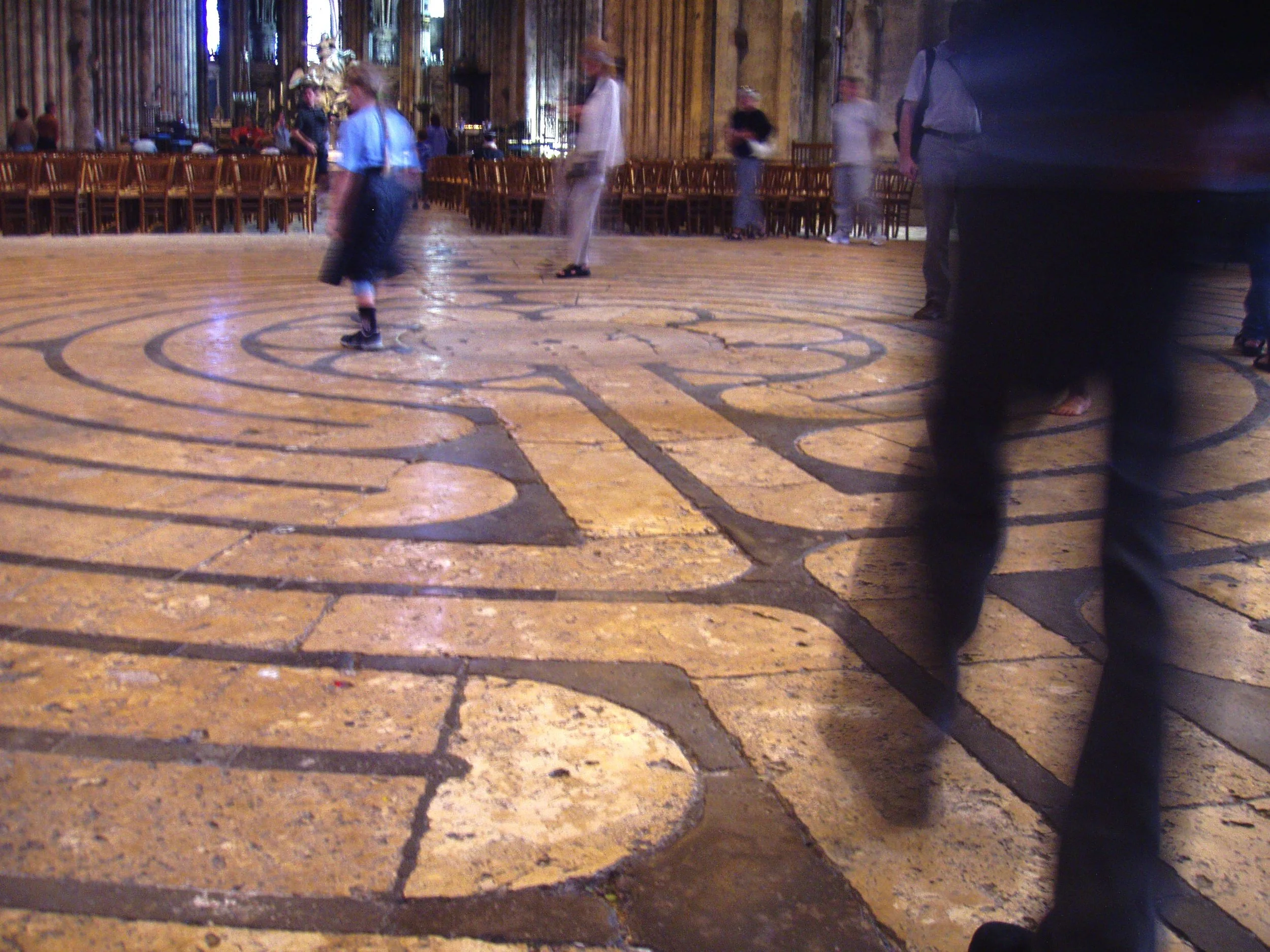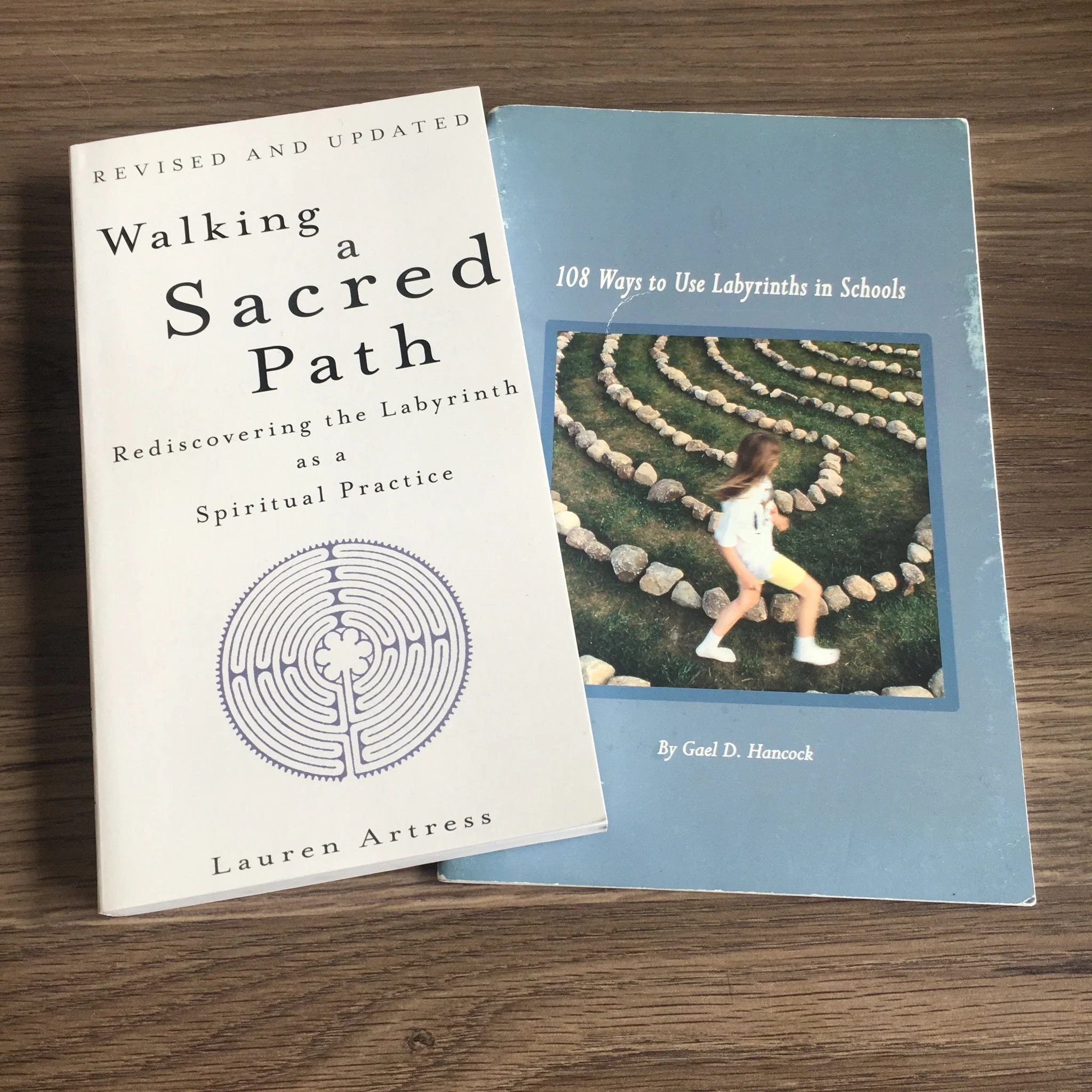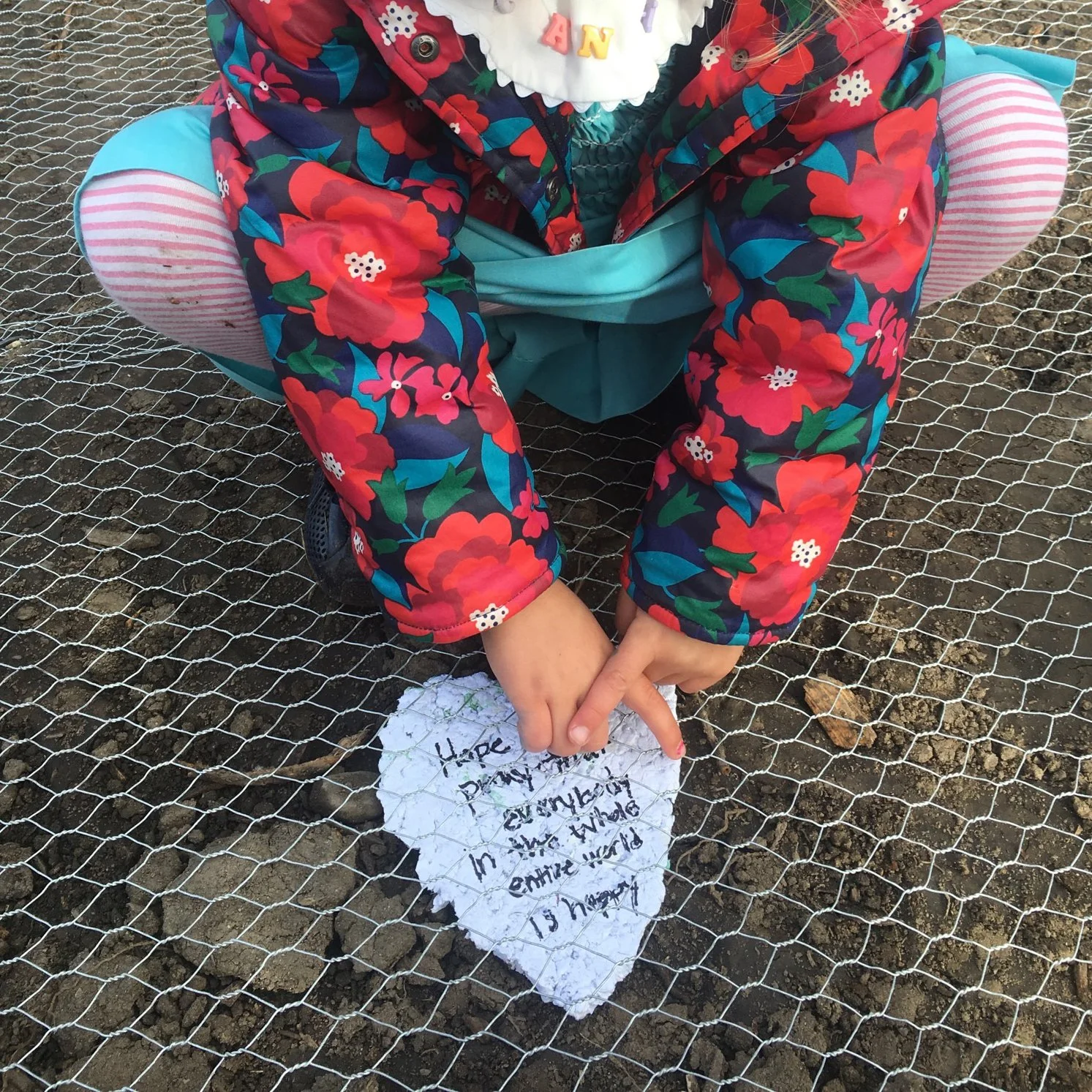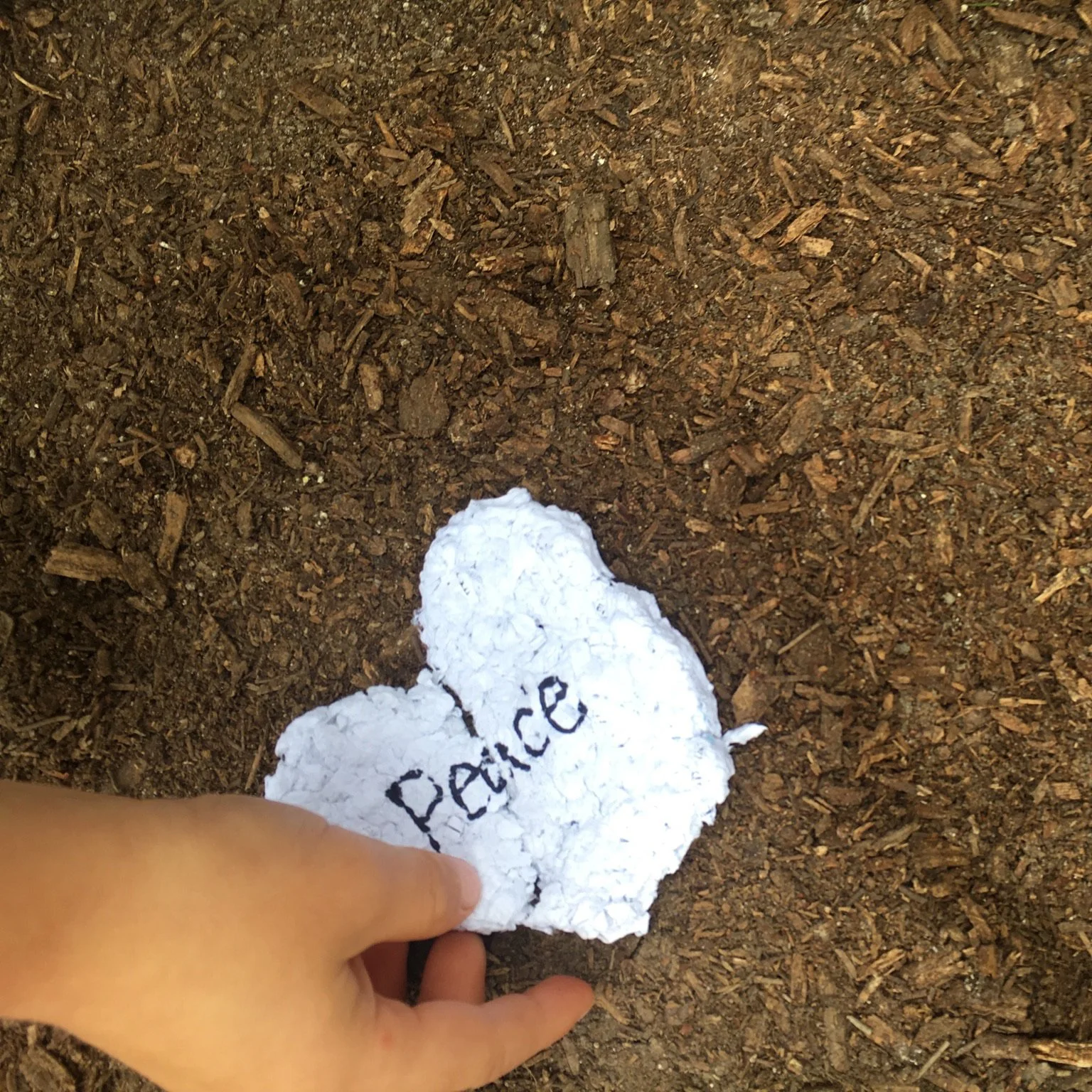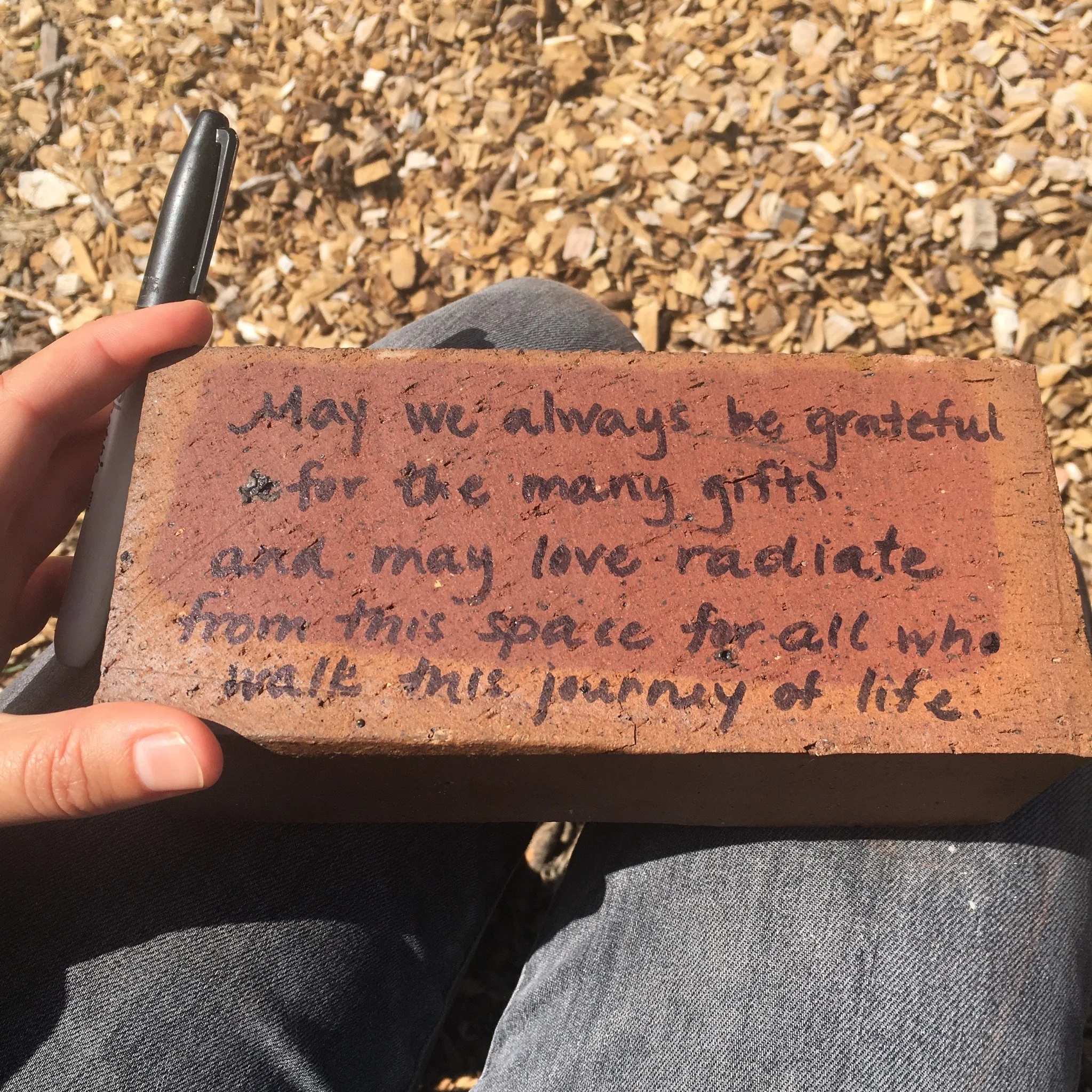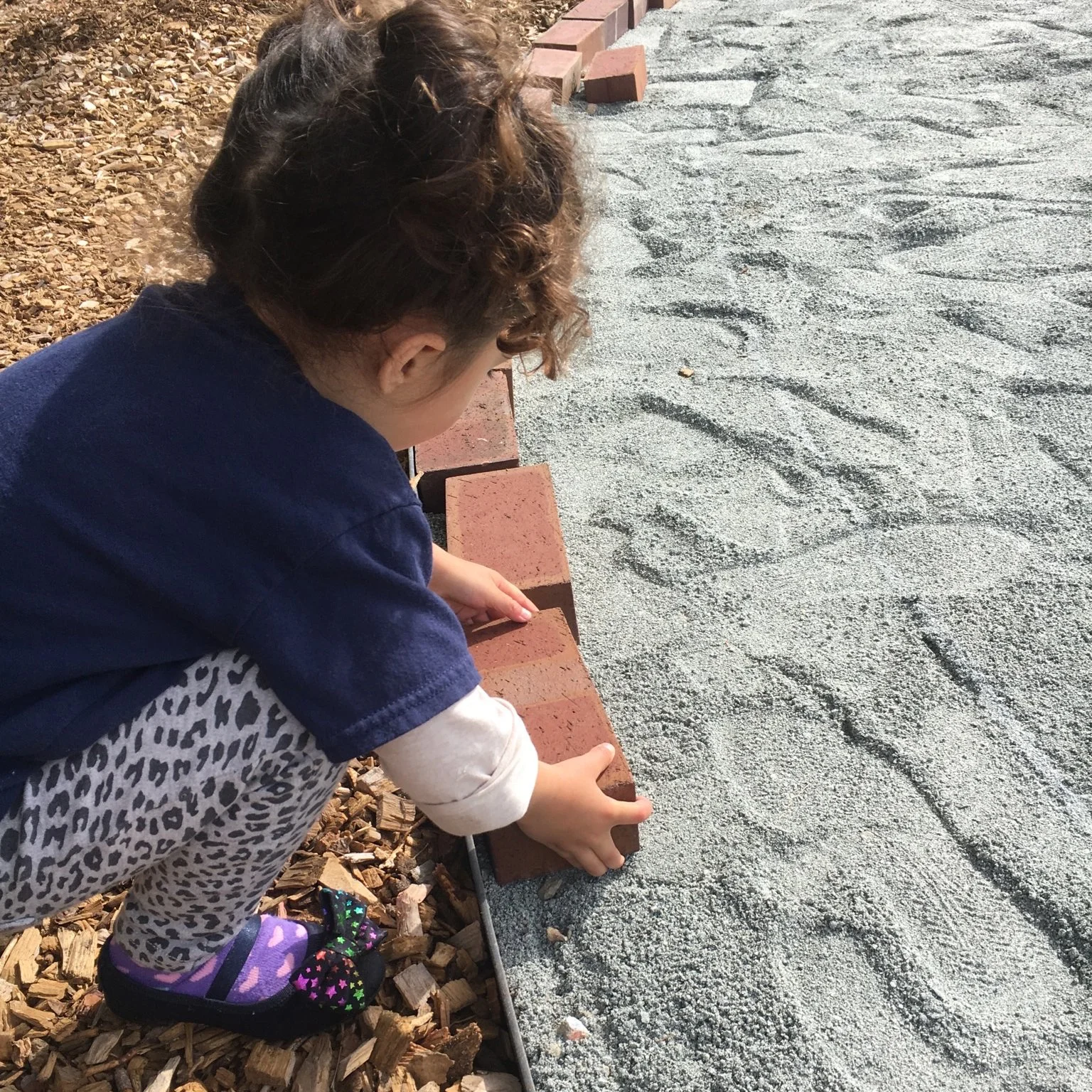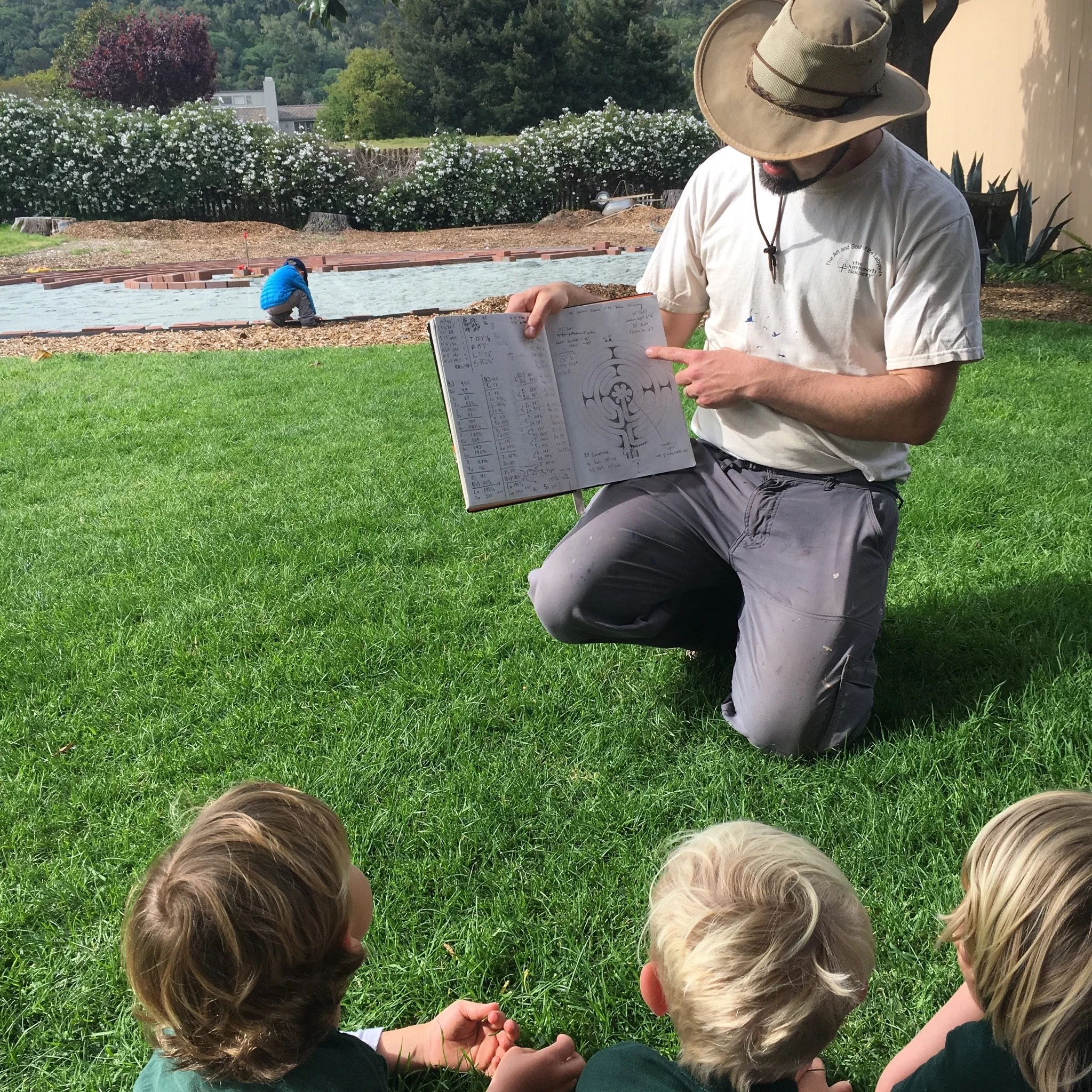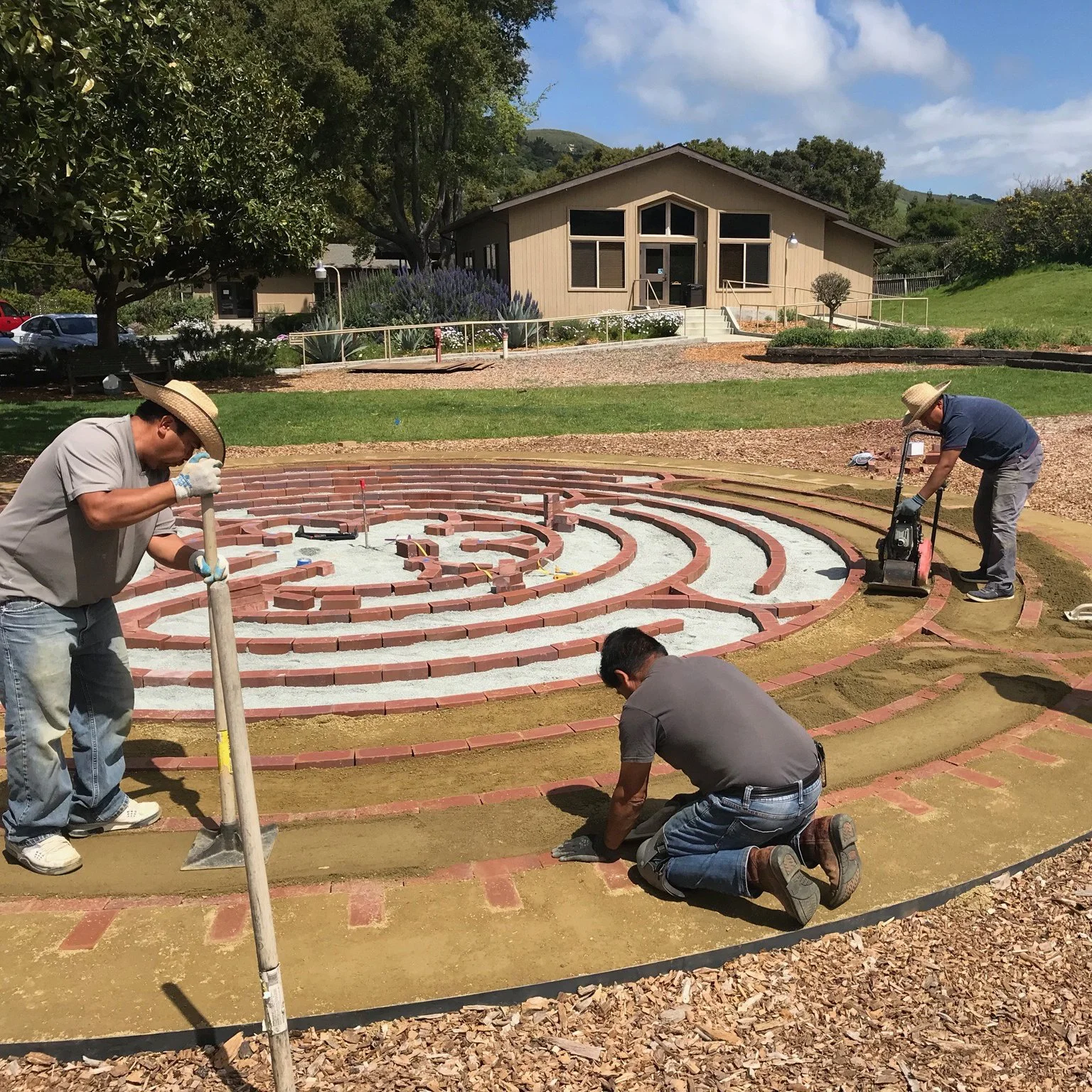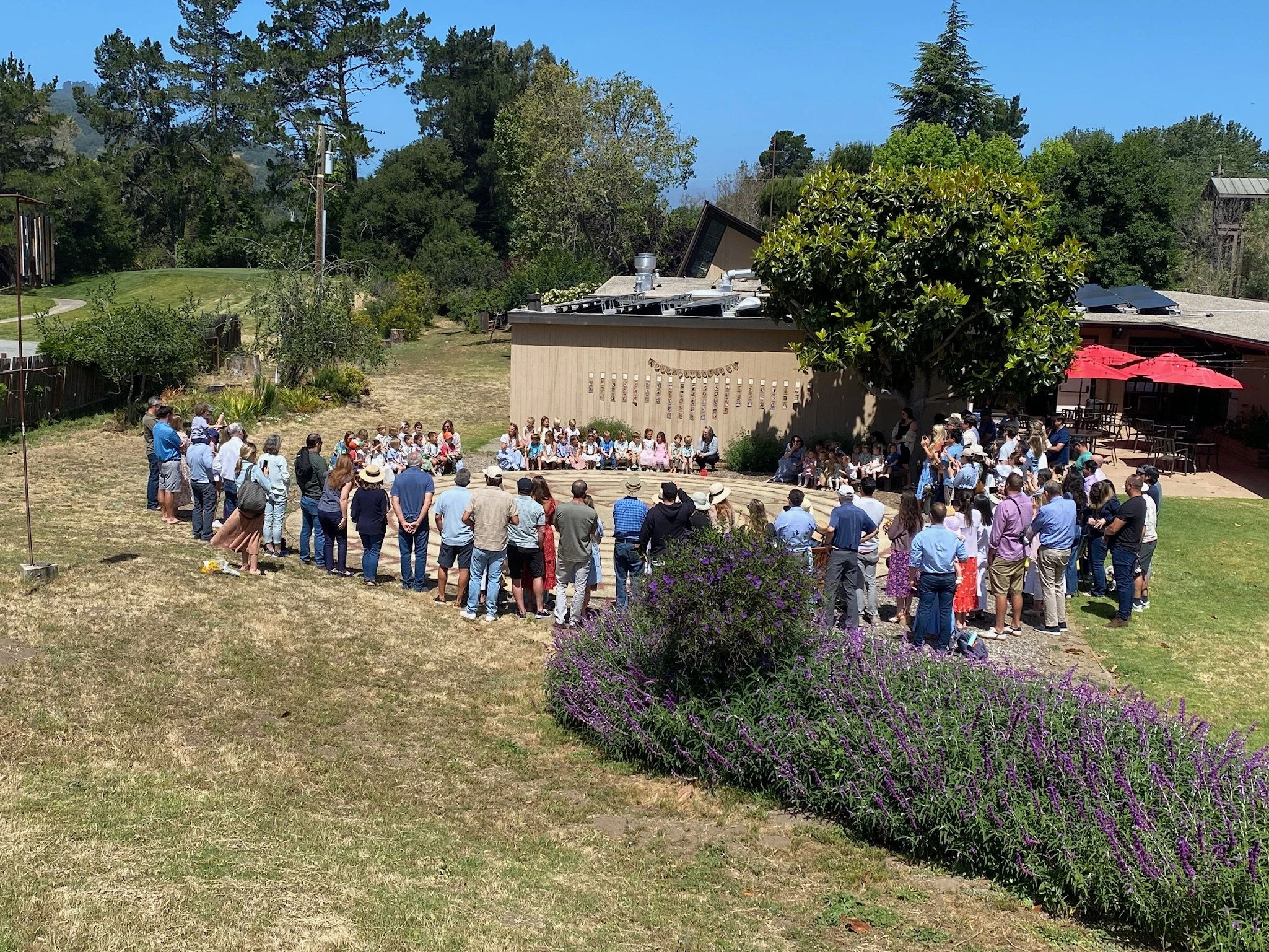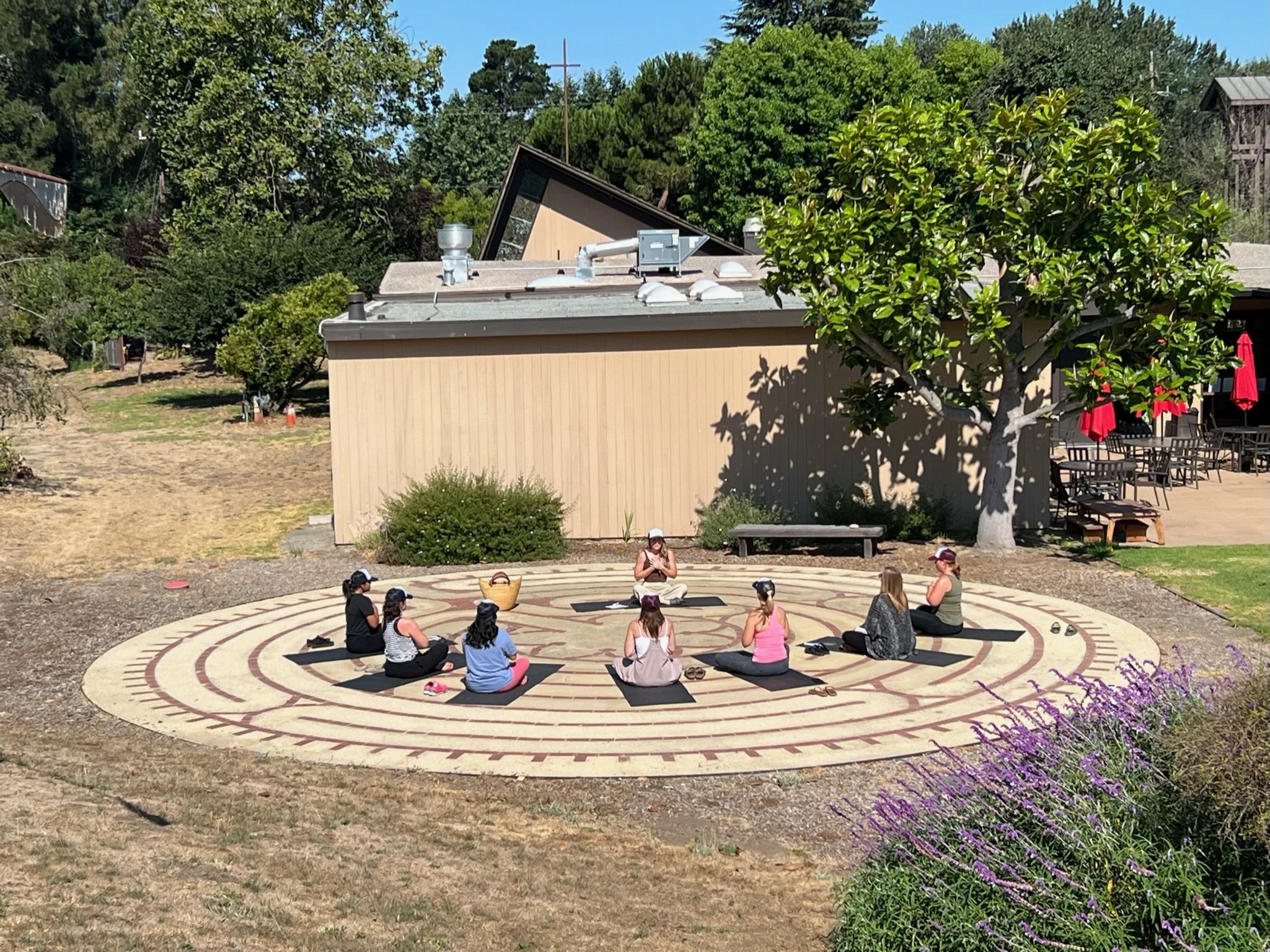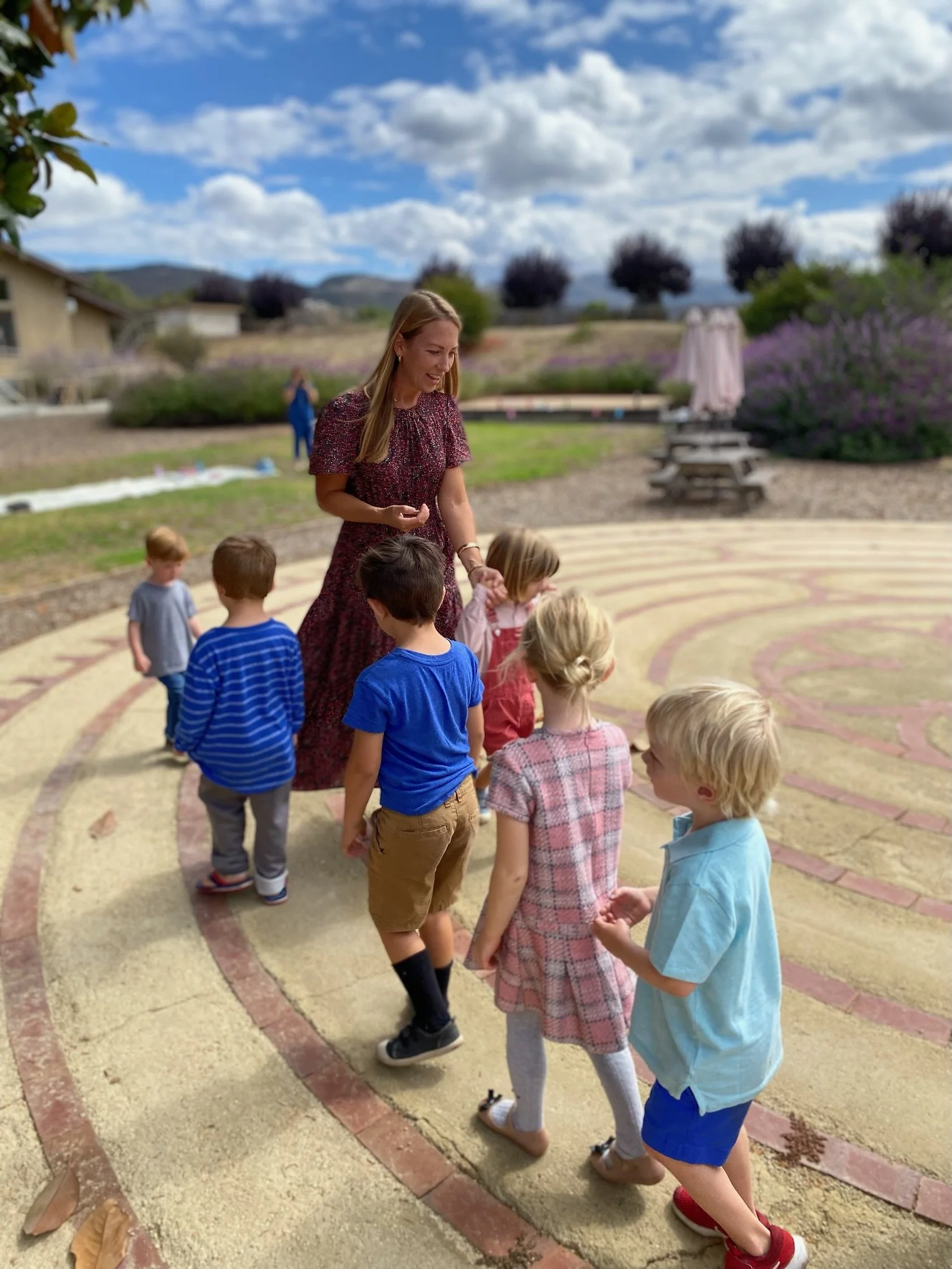
OUR LABYRINTH
“We shall walk together on this path of life, for all things are connected to the universe, and are connected with each other to form one whole unity.”
What is a Labyrinth?
The labyrinth is an archetype, a divine imprint, found in all religious traditions in various forms around the world. By walking the labyrinth, a design laid in or on the ground, we are rediscovering a long-forgotten mystical tradition that is being reborn in modern times.
The 40 foot labyrinth in the photo here is the one laid in the floor of the Chartres Cathedral in France around 1200 AD. It is in the nature of an archetype for its origin to be obscure, so no one really knows when or where labyrinths were first used. We do know that they were found at sites around the world, such as the 4,000 year old labyrinth on Crete, stone labyrinths in Scandinavia, and ancient representations in India and China.
Labyrinths are designed in accordance with sacred geometry (the design of the Universe), based on ancient knowledge that was also intuitively articulated in architectural forms. The Chartres style labyrinth is based upon the thirteen-pointed star. Through proportion, placement, and position, using a complimentary system of numbers, angles, and designs, the mind is induced to a state of rest, comfort, and harmony, leaving it open to other levels of awareness.
A labyrinth is not a maze, meant to confuse, where the walker must make choices that often lead to dead ends, but rather, the labyrinth has only one path in and out. The path twists and turns, being like a mirror for where we are in our lives; it touches our sorrows and releases our joys. Walk it with an open mind and open heart, to receive all that it has to offer.
History of the St. Dunstan’s Community Labyrinth
The Labyrinth was created in 2018 as a community offering to support one’s journey toward a more grounded state. Lauren Leonoff presented the idea of a community Labyrinth to then rector, Rob Fisher, as a way to help people return to themselves through walking meditation. After reading Walking a Sacred Path by Lauren Artress, Lauren Leonoff felt compelled to create a more formal labyrinth as opposed to the original design of river rocks placed on the ground.
Understanding the sacred geometry and importance of the layout, Lars Howlett, a professional labyrinth contractor, was hired by the School and the Church to design and install the labyrinth.
Taking into account the cardinal directions and the sun and moon phases throughout the year, the labyrinth and its entrance was determined in accordance with the patterns of nature.
Like anything that takes time, observing the construction process was a gift in and of itself for our children. They watched as the dirt was leveled, the weed cloth laid, and the bricks hauled in.
The children took the shredded Sunday bulletins from the Church and made them into paper hearts, writing their own prayers and blessings for the world. The parishioners and school families also wrote their own prayers which were then blessed by Reverend Fisher and then scattered on the earth by the children before the top level of the labyrinth was installed. When the pallets of bricks arrived, the children carried each brick to be laid along the path.
Lars Howlett teaches the children about labyrinth design
The labyrinth begins to take shape as bricks are cut and laid
The labyrinth craftsmen begin filling in the pathway between the bricks
Upon completion, we inaugurated the labyrinth with an all-school ceremony, and it has since become integral to our community. It's used for birthday celebrations, yoga sessions, moonwalks, our Halloween parade, and end-of-year ceremonies, and the wider Monterey community uses it daily.
The labyrinth offers a beautiful metaphor for life, with its twists and turns providing quiet wisdom. In our fast-paced world, it serves as a reminder to ground ourselves in the present moment. This aligns with Montessori principles, where slow, deliberate movements in the classroom help children calm their bodies, and thoughtful, silent lessons provide meditative experiences of wonder.
Just as each child navigates their own path in the labyrinth, they do so in life, connected on a shared journey. As Montessori said, "We shall walk together on this path of life, for all things are part of the universe, and are connected to form one whole unity."
We invite you to walk our labyrinth and perhaps create your own, finding moments of connection and grounding to align with your vision and highest purpose.
Why do we walk it?
We live in a time of spiritual hunger. People are seeking ways to return to their own center, quiet their minds, and tap into their inner knowing in a world that can feel so loud. The labyrinth can be used as a tool to aid the journey back to stillness, back to self, and back to inner alignment.
Walking the Labyrinth provides:
A quieting of the mind
A grounding and centering of the self
A sense of being healed
Increased unity and wholeness, on both individual and community levels
An increased awareness of self, relationship to others, and to Universal Love.
A vehicle for God’s voice to deepen our understanding of the mystery of ourselves, the Universe, and internal wisdom.
An opportunity to move out of Chronos time into Kairos time, from clock time to dream time, into a state in which we can be non-judgmental and receive and accept what arises within us.
How do we walk it?
Before you begin the walk, take a moment to reflect on where you are in your life and what you are seeking. This will help orient you.
You may pose a question or wondering that you want to work on as you walk the labyrinth: open-ended questions, not questions that require a yes or no answer.
You may choose a word, phrase, or mantra to repeat as you walk.
Take a slow breath before you enter the labyrinth to help center you as you begin to walk with deliberate steps.
There are generally three stages as you walk the labyrinth:
The First Stage:
Shedding
The path to the center can be called ‘shedding,’ as you release or let go of the details of your life. This tends to quiet the mind.
The Second Stage:
Illuminating
Reaching the center offers a place for meditation and prayer. Stay as long as you choose. The six petals represent the realms of creation, starting from the left; the mineral kingdom, the plant kingdom, the animal kingdom, humankind, the angels and the Mystery (Divine).
The Third Stage:
Union
As you exit the center of the labyrinth, a sense of union and integration can be felt as the healing forces are at work. You may wish to bless your labyrinth experience by pausing at the entrance in gratitude, before and after you walk.

